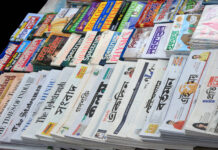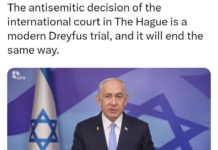Dr Ilyas Mohammed tackles the senstive topic of inter-Muslim racism.
According to a 2013 Pew Research Centre survey 23% of the world’s population are Muslims, making Islam the second-largest religion.
Today we can find Muslims in every corner of the world, some of them are born Muslim, while others have converted/reverted to Islam. Given the global nature of Islam, it is clear that Muslims will come in all colours, shapes and sizes, as well as having different cultures and understanding of Islam.
It is also reasonable to expect that Muslims (like other communities) will have “taboo” issues which they do not want to speak about because it may undermine the community, or would be considered as washing ones “dirty laundry in public”. This is especially the case when Muslims feel that they are under siege and being attacked for their beliefs.
Inter-Muslim hatred
There are numerous “taboo” subjects that Muslims feel uncomfortable discussing, and among these is what I call “inter-Muslim hate”. There are different forms of inter-Muslim hate but racism is the most visible. Other forms of hate – such as sectarianism, culture, caste and nationalism – are experienced in less offensive way.
Racial hate often manifests itself through stereotypes, humour and modes of identification. In most cases it is unconscious, in the sense that, one is not aware that they are evoking a vocabulary which causes much offence. But there are instances where this vocabulary provides the basis of discrimination and violence, not only at the cultural but also at state level.
Subscribe to our newsletter and stay updated on the latest news and updates from around the Muslim world!
If one strips away the layers of justifications, we see that this vocabulary is based on claims of racial superiority. Although notions of “racial superiority’ are condemned in Islam, it is clear that within Muslim communities they are normalised to some extent, such that a hierarchy based around shades of colour –light skin at the top and dark at the bottom – is used as a mechanism to understand, distinguish between and treat people.
Black Muslim community in South Asia
South Asian Muslims need to realise that Pakistan and India have their own indigenous Black Muslims, which are often referred to as “Siddis”. Colloquially, the term is used to denote the colour of their skin. The Siddi originate from Africa and were brought to the above-mentioned countries as slaves by Arabs and Portuguese traders.
They live in Karnataka, Gujarat and Hyderabad in India and Makran and Karachi in Pakistan. In most cases the Siddi are Sufi Muslims, but there are also some that follow Hinduism and Christianity. And in both countries the Siddis suffer from poverty and discrimination.
British Black Muslim experience of inter-Muslim racism
Speaking to African-Caribean Muslim converts in London it is clear that they experience inter-Muslim hate in the form of racism. In most cases the perpetrators are South Asian Muslims. One Black Nigerian Muslim who is married to a British Pakistani woman stated that he has been called a “bandar” meaning monkey in Urdu, Punjabi, Hindi and Bengali.
The term is very offensive because it connotes that someone who is black has the behaviour and characteristics of a monkey. He further added that, there have been cases of Black Muslim women being turned away from mosques. The example he gives reveals a deep-rooted unconscious racism.
Another African Caribbean Muslim woman I spoke to contacted a “Pakistani mosque” inquiring about a nikah ceremony – they told her to call a mosque in Brixton.
And the one issue, more than any other that brings out the deep-seated racism among Muslims, especially South Asian, is when a black Muslim male marries a South Asian Muslim woman.
Asian Muslim response to inter-Muslim racism
When I have asked Muslims in general about inter-Muslim hate, especially racism, they respond by saying:
“In Islam “everyone is equal”, or they say “no real Muslim can be racist”, and “look at the example of Bilal (ra)”.”
In all the responses there seems to be “denial” and “hiding behind Islamic text”. The issue of inter-Muslim racism can no longer be brushed underneath the carpet, in the hope that it will somehow disappear. Everyday there are more and more people embracing Islam but Muslims need to ask themselves what kind of community are they coming into.
Do Muslims want a community that sees and acts through colour, or are they willing to leave these culturally-inspired prejudices behind and embrace Islam as it was intended to be?




















